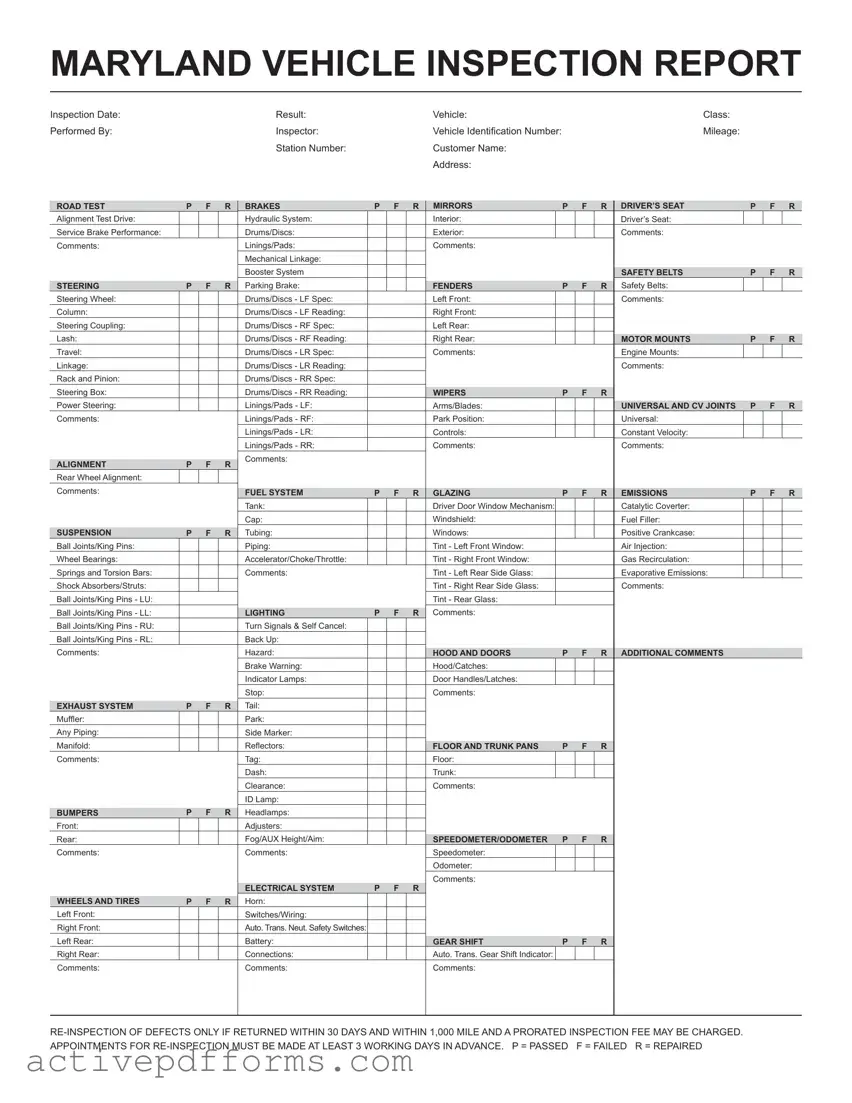Free Md Inspection Report PDF Template
The Maryland Vehicle Inspection Report form is a comprehensive document that outlines the results of a vehicle inspection, conducted to ensure the conformity of a vehicle to safety and emission standards set by the state of Maryland. It includes detailed sections on the inspection of various vehicle components such as brakes, mirrors, safety belts, steering, exhaust system, and more. Each component is marked with a status of Passed (P), Failed (F), or Repaired (R), providing a clear overview of the vehicle's condition.
Edit Md Inspection Report Now

